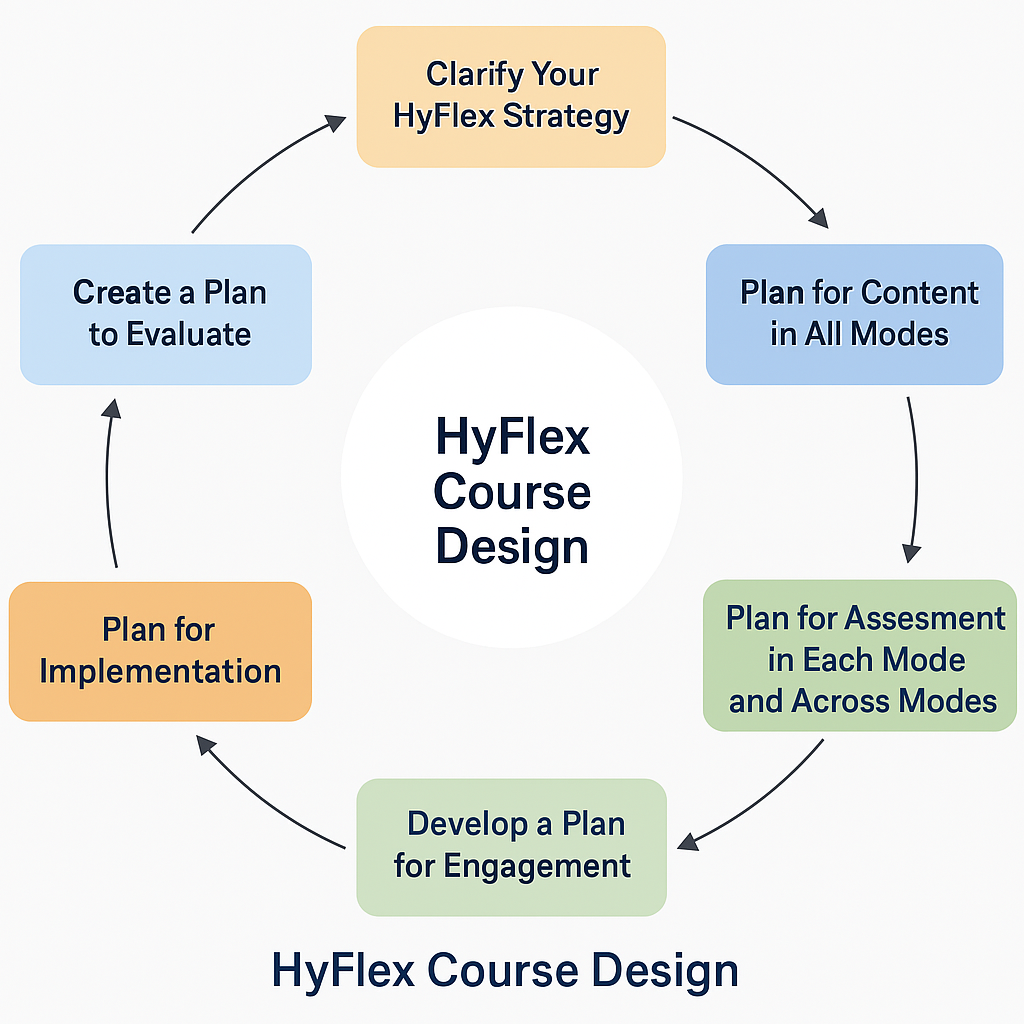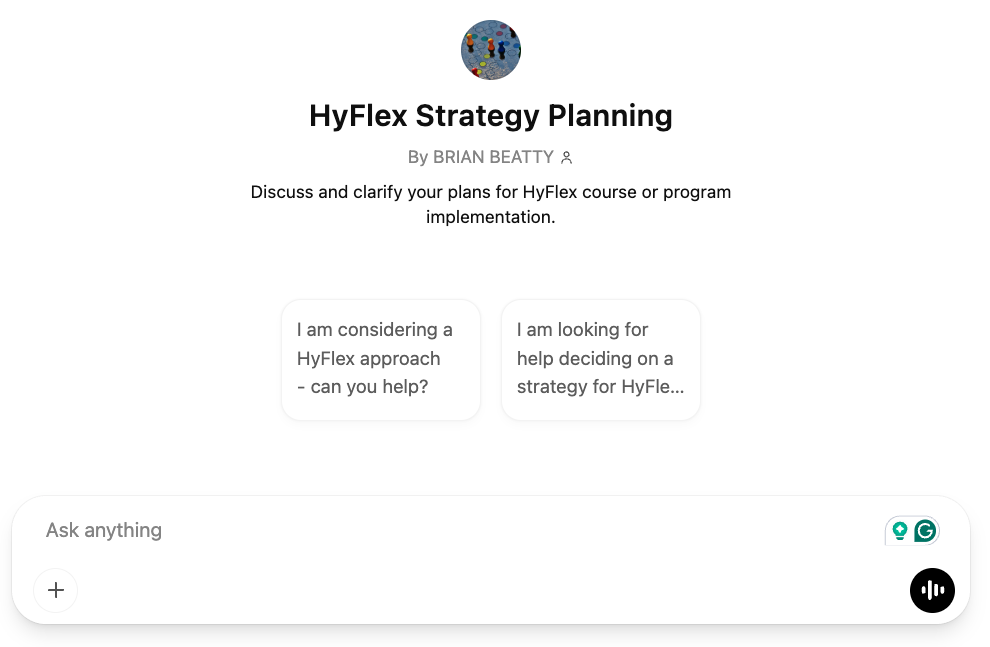As more institutions and faculty embrace the HyFlex model to support diverse learner needs, the path from idea to implementation can feel complex—even overwhelming. That’s why the HyFlex Learning Community has developed a new series of AI-powered planning assistants to support educators at every step of HyFlex course design. This blog post kicks off a six-part series introducing these tools and sharing ways they can support your work. These custom GPTs have been integrated into the HyFlex Learning Community HyFlex Course Design workshops, and are being shared through other professional venues for designers and faculty.
In this blog, we’ve previously talked about student-facing custom GPTs to support increased engagement for those working “out-of-class” – sometimes called “accidental” asynchronous learners.
Introducing the HyFlex Course Design GPT Series
To support thoughtful, strategic HyFlex planning, we’ve created a suite of six custom GPTs (Generative Pre-trained Transformers) that guide educators through essential aspects of HyFlex design:
- Clarify Your HyFlex Strategy – Align your goals with student learning outcomes (SLOs) and institutional priorities.
- Plan for Content in All Modes – Develop flexible, engaging materials for in-person, synchronous online, and asynchronous learners.
- Plan for Assessment in Each Mode and Across Modes – Ensure fair and effective evaluation for all students.
- Develop a Plan for Engagement – Build meaningful interaction strategies for and across participation modes.
- Plan for Implementation – Anticipate logistical and institutional challenges before they become obstacles.
- Evaluate Your HyFlex Impact – Track outcomes and adapt to meet your strategic goals over time.

Each GPT is freely accessible with an OpenAI account and offers structured guidance, examples, and prompts to streamline planning. Whether you’re refining an existing course or starting from scratch, these tools are here to help. We are going to introduce each in a blog post throughout 2025, but if you’d like to explore these on your own, just log in to Openai.com (free or paid access) and search the GPT store for custom GPTs authored by Brian Beatty that include the world “HyFlex”.
Focus: Clarifying Your HyFlex Strategy
The first GPT in this series helps you clarify your HyFlex strategy—perhaps the most critical step in the entire design process. Before developing materials or planning assessments, it’s essential to establish a clear vision for what your HyFlex course is intended to accomplish and why. This tool guides you through that reflection. It is not designed to draft a complete HyFlex strategy for you – that is your work to do! But the GPT will support you in that process with helpful suggestions, questions to consider, references to other helpful resources, and perhaps even a working draft document for you to take away.

Here’s what this GPT can help you do:
- Define or refine your HyFlex goals
What institutional needs or student challenges are you addressing? Are you aiming to increase access, improve student satisfaction, or boost retention? The GPT helps surface and prioritize these goals. - Align your strategy with Student Learning Outcomes (SLOs)
A common challenge is ensuring that flexibility in participation modes doesn’t compromise the integrity of learning outcomes. The GPT helps you reflect on how your course’s SLOs map across modes, and whether the HyFlex approach supports or challenges those outcomes. - Ask critical “fit” questions
Is HyFlex the right fit for this course—or this instructor? What support structures need to be in place for success? The GPT helps you consider these deeper questions with prompts that challenge assumptions and focus your strategy.
Try it out! Try the Strategic Planning GPT
Why Start Here?
Designing a HyFlex course isn’t just about content delivery, it’s fundamentally about rethinking how learners interact with your course and how your course interacts with their lives. A strong intentional strategy can give you and your students confidence that even though there are many paths through a course experience, consistent learning is still supported. By starting with a clear strategy, you build a foundation that makes the rest of your planning more efficient, coherent, and sustainable.
Curious to see how it works? Check out this sample interaction with the Strategic Planning GPT: Example: Strategic Planning GPT Chat
Coming Up Next: Planning Content for All Modes
In our next post in this series, we’ll explore the second GPT in the series: Content Planning. We’ll look at how the AI assistant helps you design learning materials that are not only flexible, but also equitable and engaging across participation modes.
Until then, feel free to explore the GPT tools yourself, or share your experience in the HyFlex Learning Community forums or comments to this blog post.
Let AI be your design partner—your students will thank you for it.